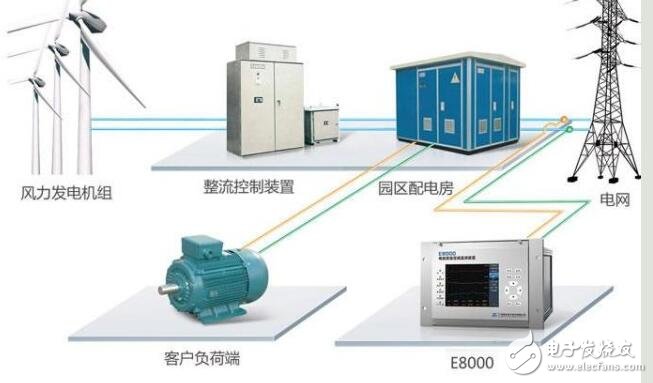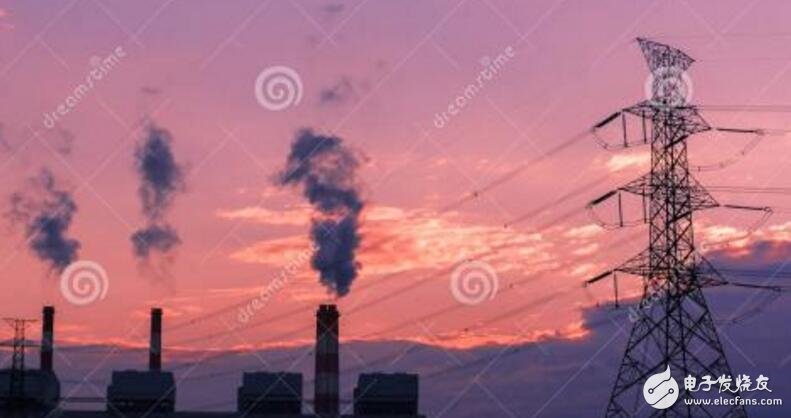Abstract: Electrical energy has been widely used as a product. The quality of power is directly related to people's life and safety. So what is power quality? What is the quality of power? What are the causes of power quality and improvement measures? The following small series will answer you one by one.
First, what is power quality?Power quality refers to the quality of electrical energy in a power system. The ideal electrical energy should be a perfectly symmetrical sine wave. Some factors cause the waveform to deviate from the symmetrical sine, which creates a power quality problem. On the one hand, we study what influence factors will lead to power quality problems. On the one hand, we study what kind of problems these factors will lead to. Finally, we need to study how to eliminate these factors, so as to maximize the electrical energy close to the sine wave.
Second, the main indicators to measure power qualityIndicators for measuring power quality include: voltage deviation, frequency deviation, voltage three-phase imbalance, harmonics and interharmonics, voltage fluctuations, and voltage flicker.
1. Voltage deviation: The voltage deviation refers to the unstable supply voltage and the voltage rise or fall.
2. Frequency deviation: All grids have the same grid frequency requirements and will not change due to different power users. Frequency deviations have corresponding regulations in each country.
3. Voltage three-phase unbalance: The value of the three-phase voltage exceeds the specified standard.
4, harmonics and interharmonics: the frequency is an integer multiple of the fundamental wave of the sinusoidal current or voltage called harmonics. Non-integer multiples are collectively referred to as interharmonics.

The nominal frequency of China's power system is 50Hz. GB/T15945-2008 "Power Quality Power System Frequency Deviation" stipulates that the frequency deviation limit of the power system under normal operating conditions is ±0.2Hz. When the system capacity is small, the deviation limit Can be relaxed to ±0.5Hz, the standard does not specify the limit of the system capacity. In the National Electricity Supply and Consumption Regulations, the allowable deviation of the power supply frequency of the power supply bureau: ±0.2HZ for the grid capacity of 3 million kilowatts or more; ±0.5HZ for the grid capacity of 3 million kilowatts or less. In actual operation From the operation of major power systems in the country, it is kept within the range of not more than ± 0.1HZ.
Voltage deviationGB/T12325-2008 "Power Quality Supply Voltage Deviation" stipulates that the sum of the absolute values ​​of the positive and negative deviations of the supply voltage of 35kV and above does not exceed 10% of the nominal voltage; the deviation of the three-phase supply voltage of 20kV and below is the nominal voltage Soil 7%; 220V single-phase power supply voltage deviation is +7%, -10% of the nominal voltage.
Three-phase voltage imbalanceGB/T15543-2008 "Power Quality Three-Phase Voltage Unbalance" stipulates: The voltage unbalance limit of the common connection point of the power system is: when the power grid is in normal operation, the negative sequence voltage imbalance is not more than 2%, and the short-term time must not exceed 4%; low-voltage system zero-sequence voltage limit is not specified, but each phase voltage must meet the requirements of GB/T12325. Each user connected to the common connection point causes the negative sequence voltage imbalance value of the point to be generally 1.3%, and the short-term does not exceed 2.6%.
Utility grid harmonicsGB/T14549--93 "Power Quality Harmonics of Public Grid" stipulates that the total harmonic distortion rate of the utility grid voltage (phase voltage) of 6~220kV is 5.0% for 0.38kV, 4.0% for 6~10kV, 35~ 66kV is 3.0%, 110kV is 2.0%; the allowable value of the harmonic current injected into the grid by the user should ensure that the harmonic voltage of each level of the power grid is within the limits, so the national standard specifies the total harmonic distortion rate of the voltage generated by the harmonic sources of each level of the power grid. Yes: 0.38kV is 2.6%, 6-10kV is 2.2%, 35~66kV is 1.9%, and 110kV is 1.5%. For the 220kV power grid and its power users, refer to this standard 110kV.

GB/T24337-2009 "Power Quality Utility Inter-Grid Harmonics" stipulates that the inter-harmonic voltage content is 1000V and below, "100Hz is 0.2%, 100~800Hz is 0.5%, 1000V or more" 100Hz is 0.16%, 100~ 800 Hz is 0.4%, and 800 Hz or more is under investigation. The harmonic content of a single user is 1000V and below. "100Hz is 0.16%, 100~800Hz is 0.4%, 1000V or more" 100Hz is 0.13%, and 100~800Hz is 0.32%.
Fluctuation and flickerGB/T12326-2008 "Power Quality Voltage Fluctuation and Flicker" stipulates that: the common connection point of the power system, in the smaller mode of system operation, with one week (168h) as the measurement period, all long-term flicker values ​​Plt satisfy: ≤ 110kV, Plt=1; "110kV, Plt = 0.8. And the relevant regulations of individual users.
Voltage dip and short interruption GB/T30137-2013 "Power quality voltage sag and short-term interruption" definition: voltage sag refers to a point in the power system, the power-mean voltage rms value suddenly drops to 0.1pu~0.9pu, and after a short period of 10ms~1min The normal phenomenon is restored; short-term interruption refers to the phenomenon that the square root of the power frequency voltage suddenly drops to less than 0.1 pu at a certain point in the power system, and returns to normal after a short period of 10 ms to 1 minute.
Flum Float,Flum Float 3000 Puffs,Flum Float Vape,Flum Float Disposable
Shenzhen Zpal Technology Co.,Ltd , https://www.zpal-vape.com